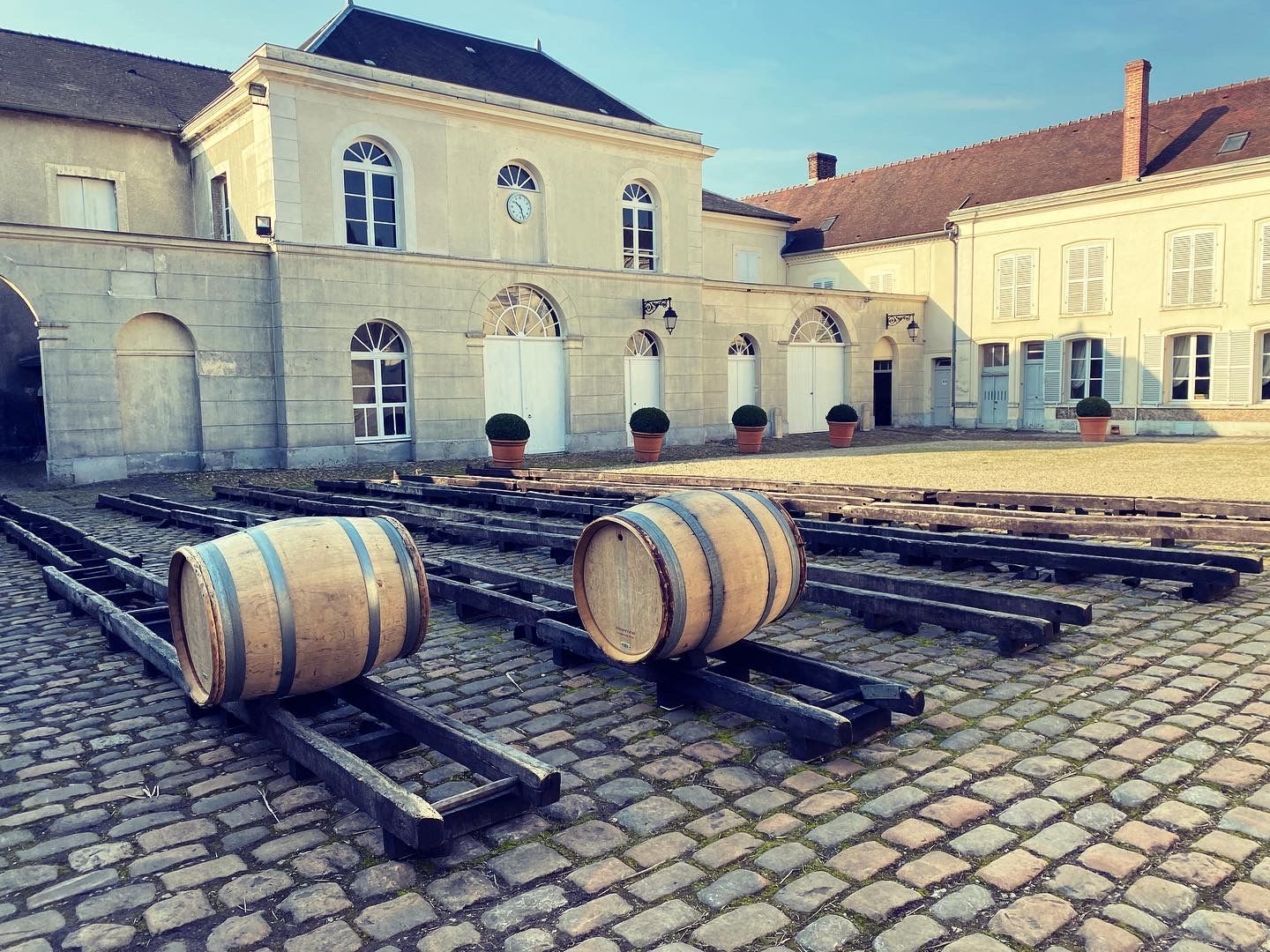The origin of the Bollinger Vins Clairs tasting lies in the growers (that account for 40% of the house’s fruit) getting a chance to taste their finished wines before they are blended into the Special Cuvée.
The tasting of the Vins Clairs is an important date in the diary of all Champenois. For it is at the beginning of March when all the major Houses finalise the blend of their flagship Non-Vintage, or as they are increasingly and more accurately being called, Multi-Vintage blends. In the case of Champagne Bollinger this is its flagship Special Cuvée which will be its 2022 edition blend, based upon the 2021 harvest.
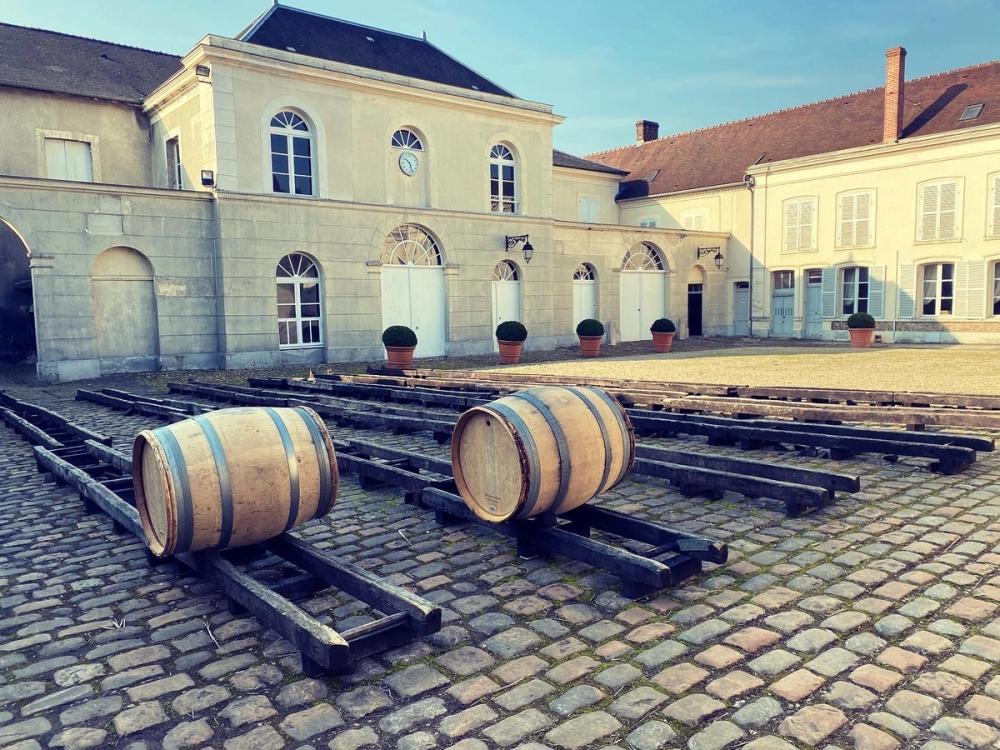
Barrel-drying area in front of the old Bollinger house
The Vins Clairs event held on March 3 sees the top brass and winemaking team from Bollinger out in force to meet and greet some 50 key trade and press from half a dozen countries, the absence of the buyers from Ukraine, the only sad reminder of the reality of what is going on in other parts of Europe.
Apart from that the atmosphere is something like a Harvest Festival with the team keen to show off the blend it has arrived at, explain its composition, and then dine with a meal that shows off the strength and depth of Bollinger’s top cuvées.
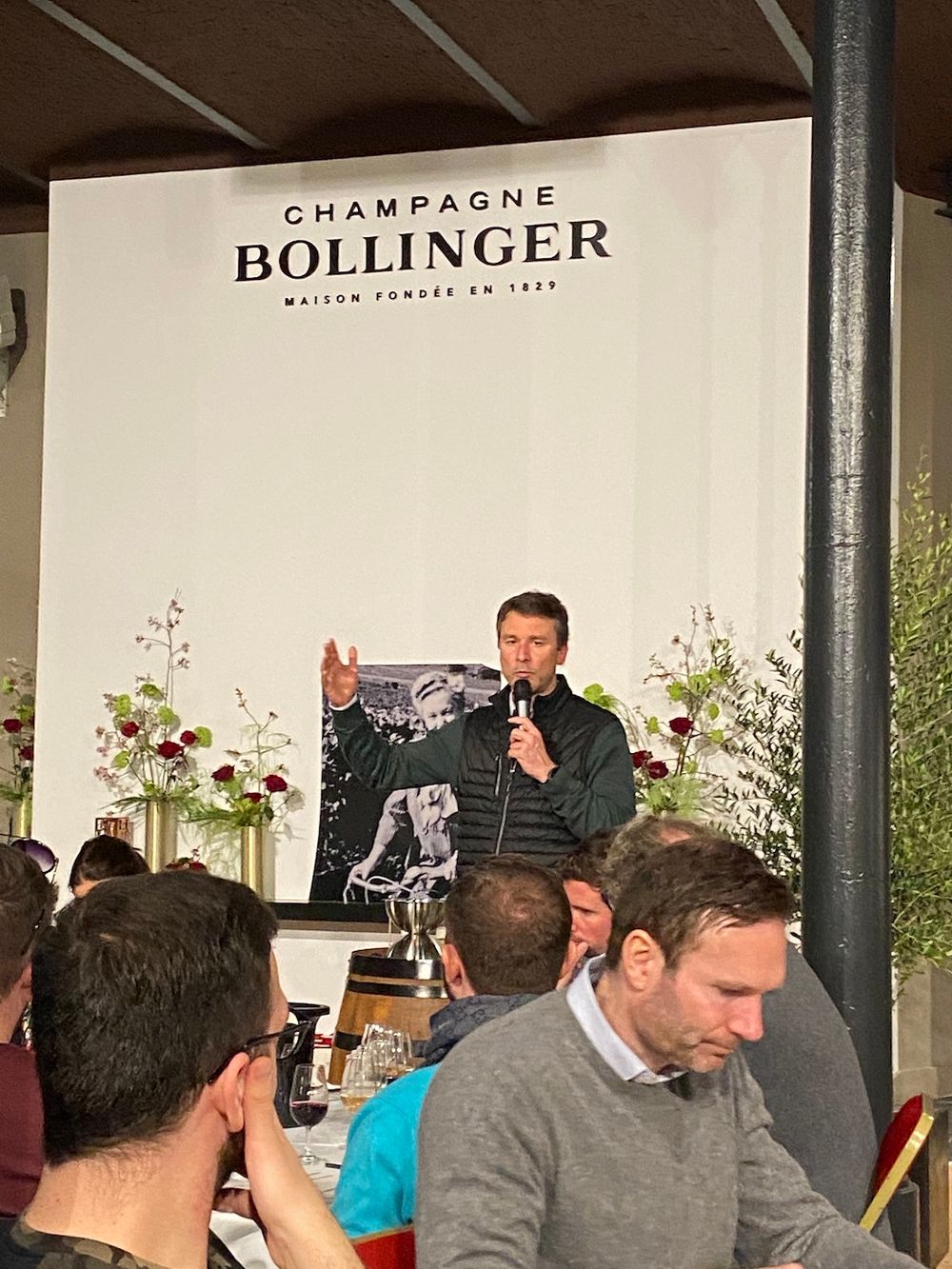
Denis Bunner, deputy chef de cave, at the Vins Clairs 2022 lunch
For Denis Bunner, Bollinger’s deputy chef de cave, and his team it also marks the end of a three-month period during which they have had to taste 50 still wines a day before deciding on which of the 40 crus that they vinify for Special Cuvée will actually end up going into the final blend.
Bunner says that dentists in the Bollinger’s home village of Ay are very busy during this period – after all the Vins Clair are young, still wines that have punchy acidity and tasting them is an acquired art and not for the faint-hearted. To taste that many young, acidic wines every day for 90 days would test anyone’s tooth enamel.
Thankfully the Bollinger Vins Clairs tasting only involves five of these 2021 wines that the team has laid on at this year’s event and their acidity is tempered by a basket of freshly-baked goujons; these are then followed by a 2012 reserve sample, the 2022 Special Cuvée blend, and a still red wine that has been made for the Rosés; it is a fascinating tasting with much to learn.
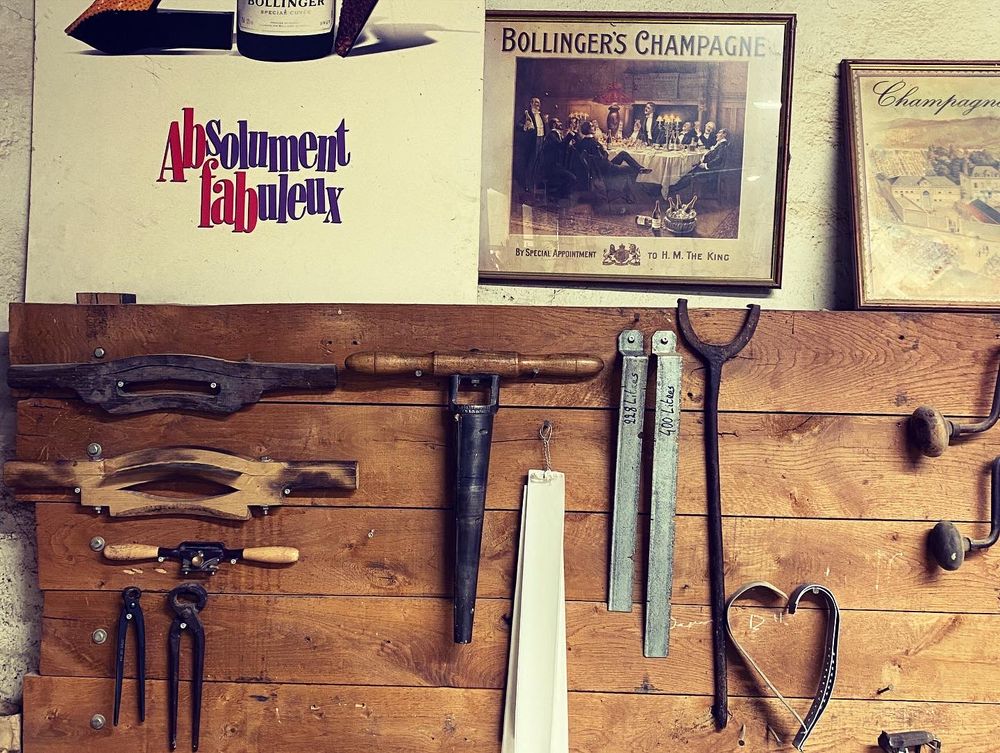
Work tools in Bollinger’s cooperage – the only remaining one in the whole of Champagne
Bunner will make the final blend much like an artist mixes colours on his palette – and the samples he is using could not be more different. We taste two identical Vins Clairs from Cuis, the only difference being that one was vinified in tank, the other in oak barrel. Both wines express aromas of citrus and white orchard fruit, but the tank sample is cloudy and has a rustic funk about it which the clear, more finished barrel sample doesn’t have – this barrel sample feels more precise, finished (wines vinify quicker in barrel) and textural, the pH is lower and the acidity more high-toned. And they are both from the same cru.
The tank sample from the unclassified village of Châtillon sur Marne has a pink tinge, a rounder mouthfeel and more stone fruits in its profile. And so on.
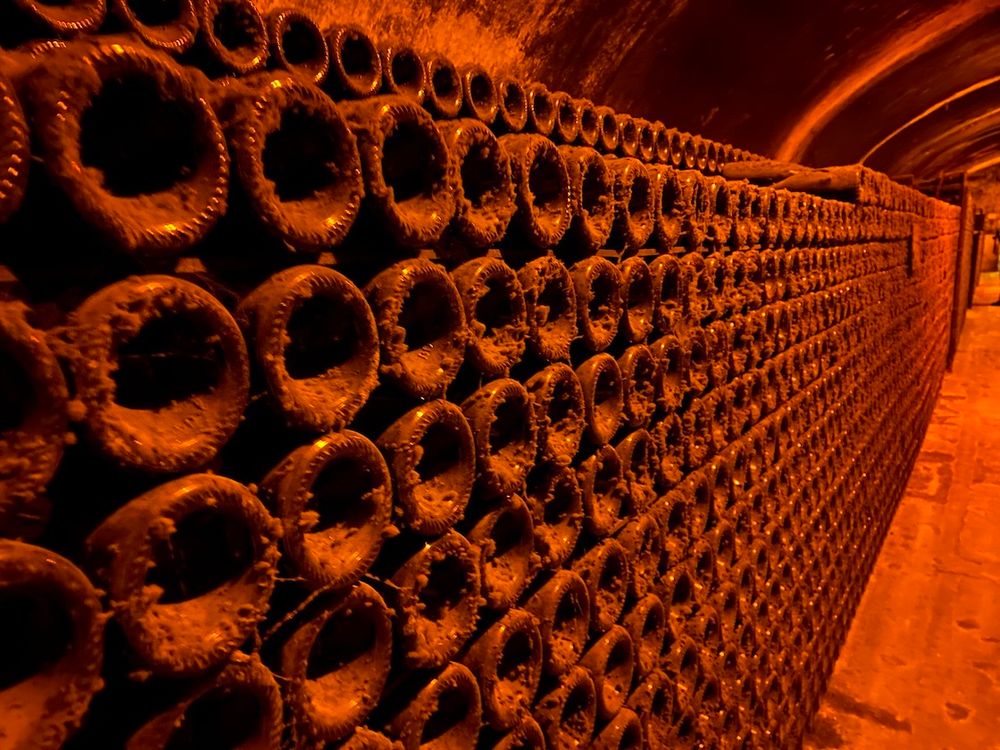
The Special Cuvée blend will include a substantial proportion of reserve wines 5-15 years old, all stored in magnum
What The Bollinger team has at its disposal is reserve wines which they can use to arrive at a blend that is true to the House style of Special Cuvée. In the six kilometres of cellars underneath the winery are 750,000 magnums of reserve wines that are kept at quarter pressure (to help prevent any oxidization) and can be dipped into as when the blend requires.
Because the 2021 growing season was so difficult (“one of the most difficult in our history,” Bunner says) with 30% of the crop being lost in April frosts there will be 55% of reserve wines, coming from eight different previous vintages, used in the new Special Cuvée blend. Sad to note that the Marne Valley was even harder hit in 2021 with growers losing 70-80% of their Meunier crop.
The blend that the team has decided on for the 2022 edition of Special Cuvée is 65% Pinot Noir, 20% Chardonnay and 15% Pinot Meunier.
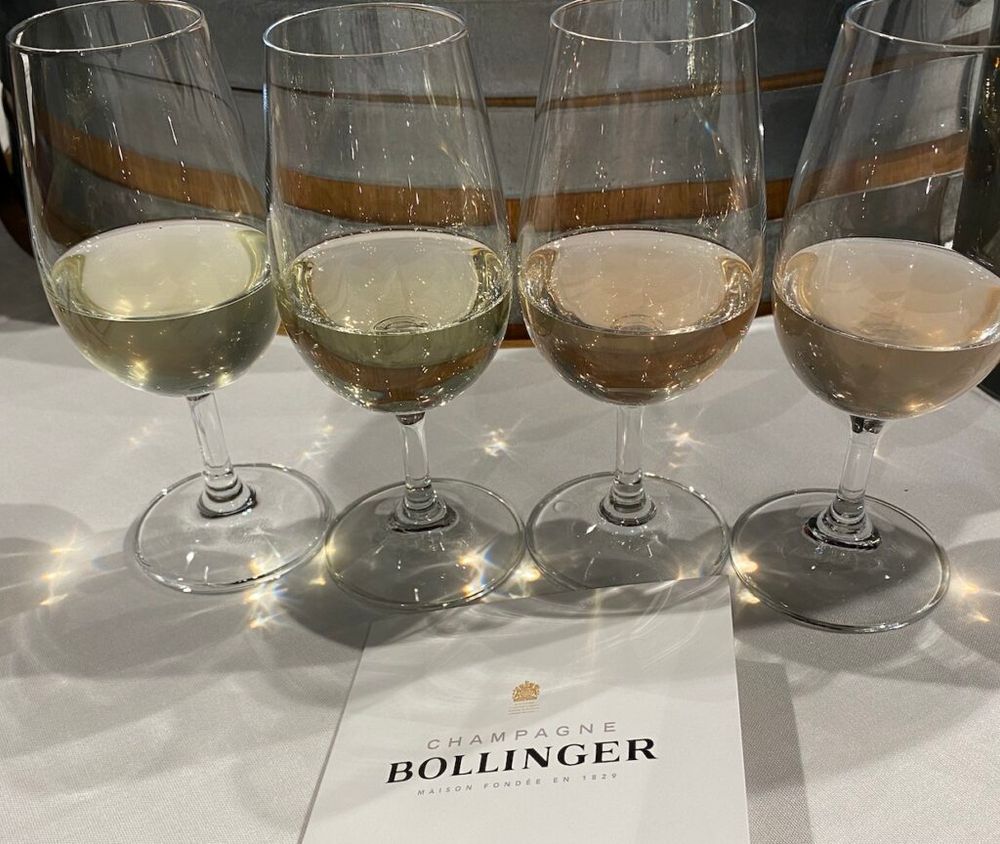
Champagne Bollinger Vins Clairs line-up from the 2021 vintage
Having over 60% Pinot Noir in all its cuvées is one of the five central pillars of the Bollinger style, the other four pillars being: the use of reserve wines kept under cork in magnum; the use of barrels for vinfying the still wines; using fruit mainly from Grand Cru and Premier Cru vineyards (85% of its 80 hectares) and ageing the finished Champagne two to three times longer than the 15 months in bottle that are required by law. When visiting Bollinger the importance of the barrels becomes very clear. They have 4000 228-litre barrels that they source from Bollinger-owned Domaine Chanson in Burgundy and they have the only surviving cooperage in Champagne to maintain them.
The immense skill, then, required for the tasting, choosing and blending of the Vins Clairs is hard to fathom given the sheer volume of individually vinified crus and plots. The fact that the chef de cave has to then project how the wines will react to the given dosage and years of ageing makes the whole process even more complex.
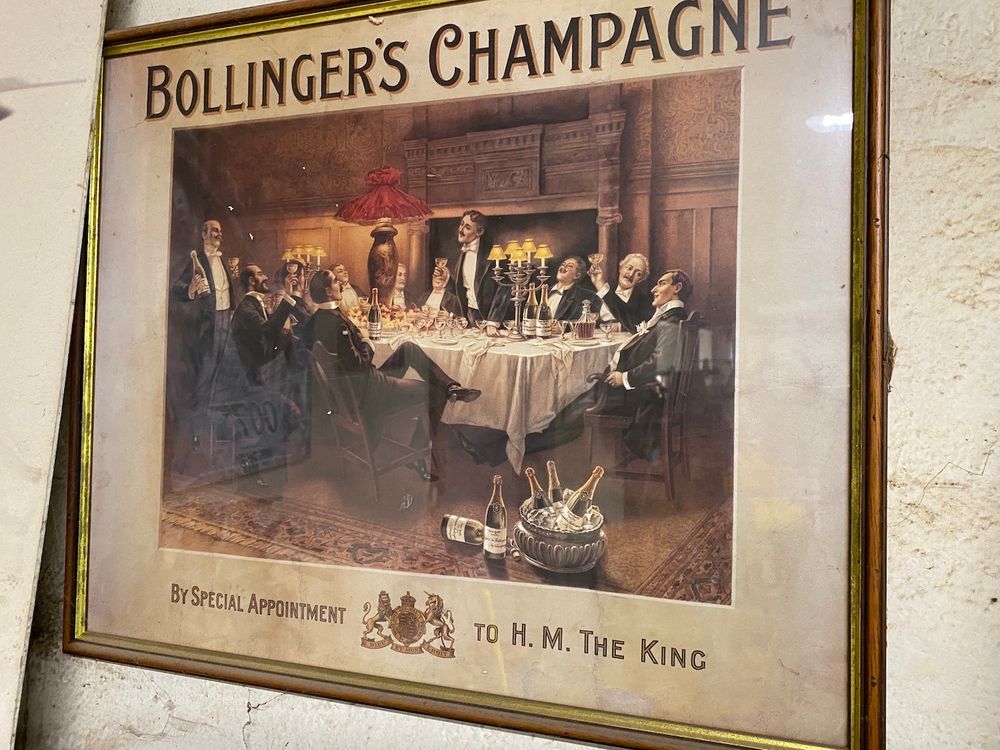
The historical significance of the British market is evidenced throughout the Bollinger house
What is clear is that to make a great Champagne the team has to first make a great wine, and one that is true to the style of the House. Over lunch we learn that with Bollinger the influence of the UK market ever since the House made its first cuvée in 1829 has been felt in the distinctive density of the Bollinger wines.
“Vinosity was very important to the British who had the tradition of Bordeaux and Port, and they looked for high density which is why Bollinger has this specific density that makes us very different to other Houses,” explains international sales director Guy de Rivoire.
The tour and the Vins Clairs tasting over it was also good to learn the origins of this annual tradition.
Because 40% of Bollinger’s grapes are bought in, it was decided that the growers should be invited to come in and taste the wines, to see the style of vinification before they were made into the House blend.
That invite was then extended to wine buyers and journalists so they too could get a better understanding of the vintage, the House style and the mind-boggling array of combinations that each blend could possess. Oh, and have a pretty awesome lunch at the same time 😉
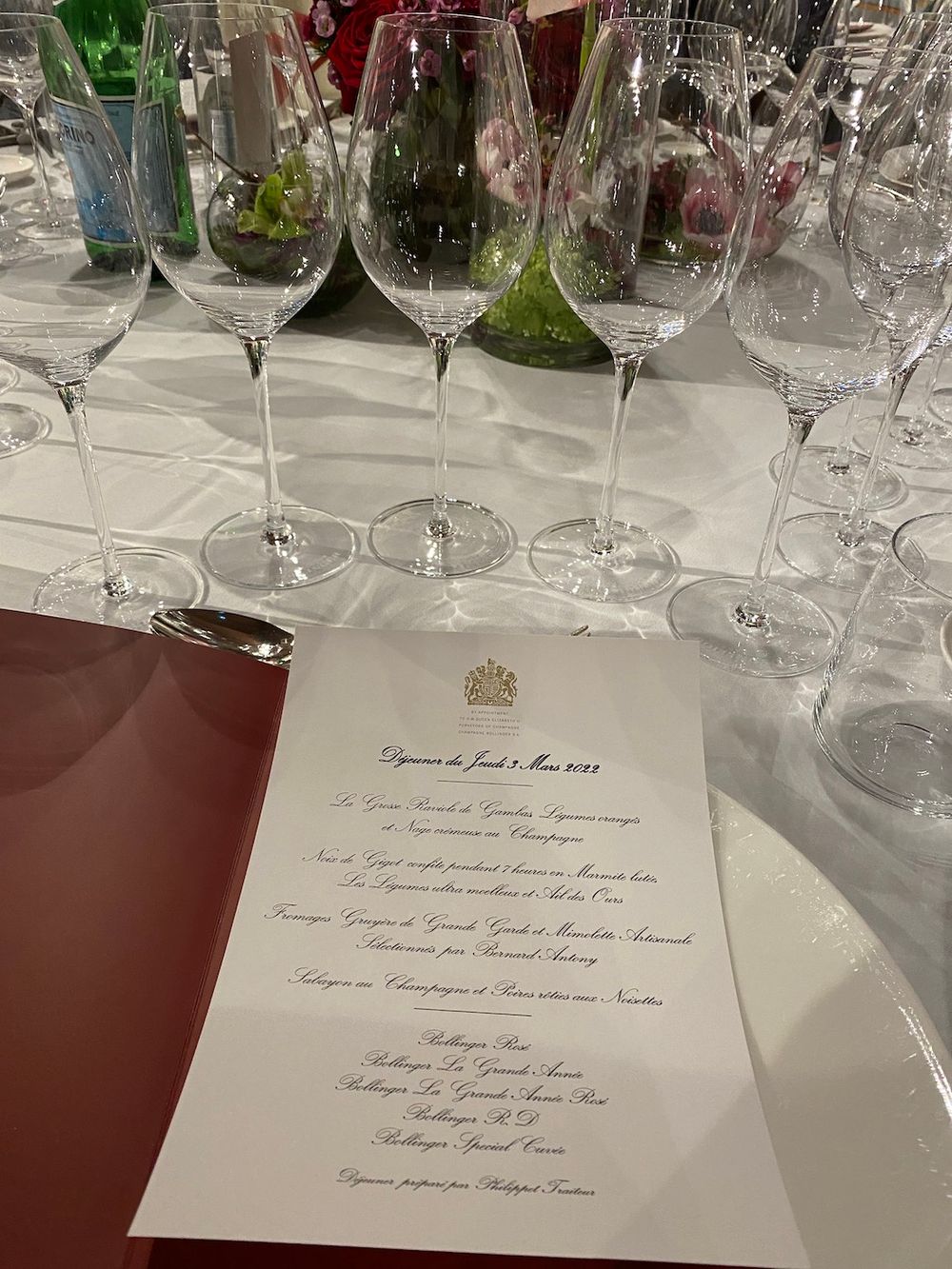
That Champagne Bollinger Vins Clairs lunch menu in full
Champagne Bollinger is sold and distributed in the UK by Mentzendorff which is a supplier partner of The Buyer – to discover more about them click here.
